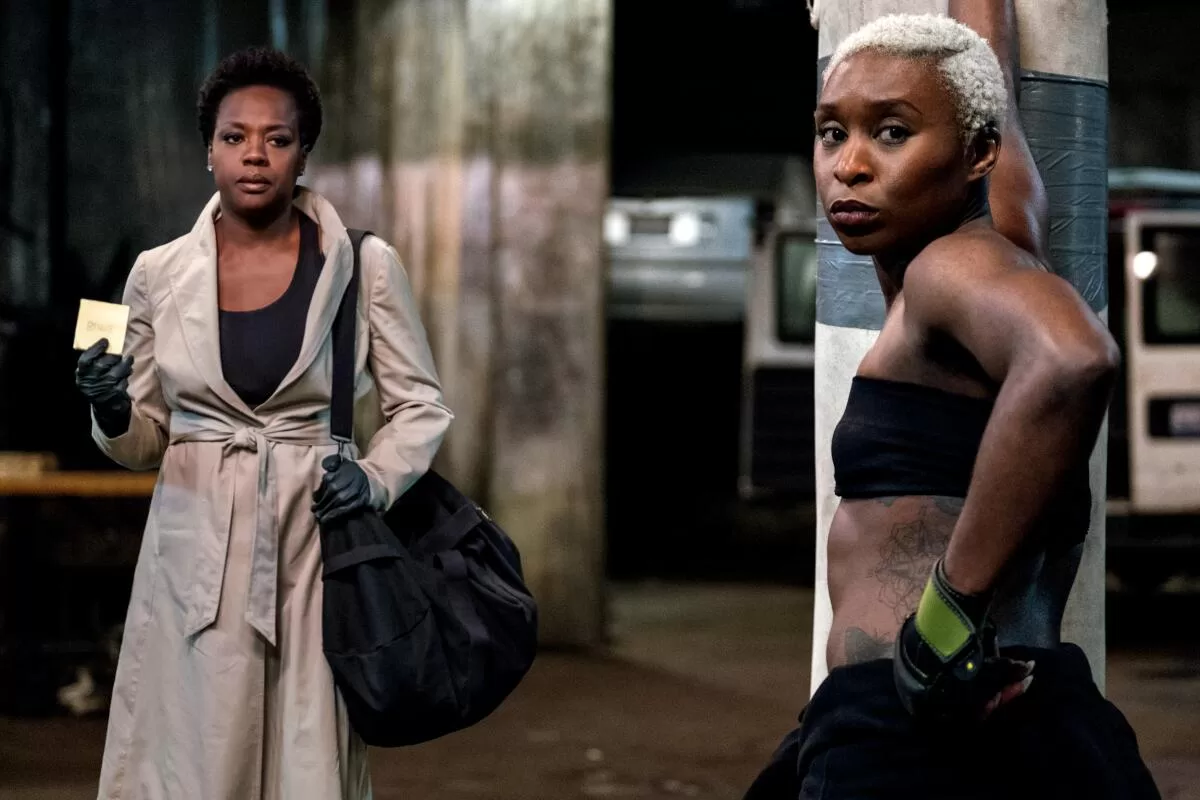Hello! I’m Mark Olsen. Welcome to another edition of your regular field guide to a world of Only Good Movies.
Regardless of one’s political persuasion, this has been a topsy-turvy, anxiety-inducing week. One night when I couldn’t sleep, as I often do, I put on a movie. Telling myself it counted as prep for my interview with “Wicked” star Cynthia Erivo — to be heard on an upcoming episode of “The Envelope” podcast — I started up Steve McQueen’s “Widows.”
Not that I really needed an excuse, as I’ve adored the film since it first came out. I hadn’t watched it in probably a few years and it unexpectedly turned out to be just the right thing to match my mood and provide a bit of uplift and inspiration.
Co-written by McQueen and “Gone Girl” author Gillian Flynn, the film follows a group of women in Chicago (Viola Davis, Michelle Rodriguez, Carrie Coon and Elizabeth Debicki) who are left at loose ends when their husbands’ criminal crew all die in a job gone wrong. Suddenly they find themselves in debt to the wrong kind of people, and the only way out is to commit a heist of their own. (Erivo plays a single mother enlisted to their ranks as an accomplice.)
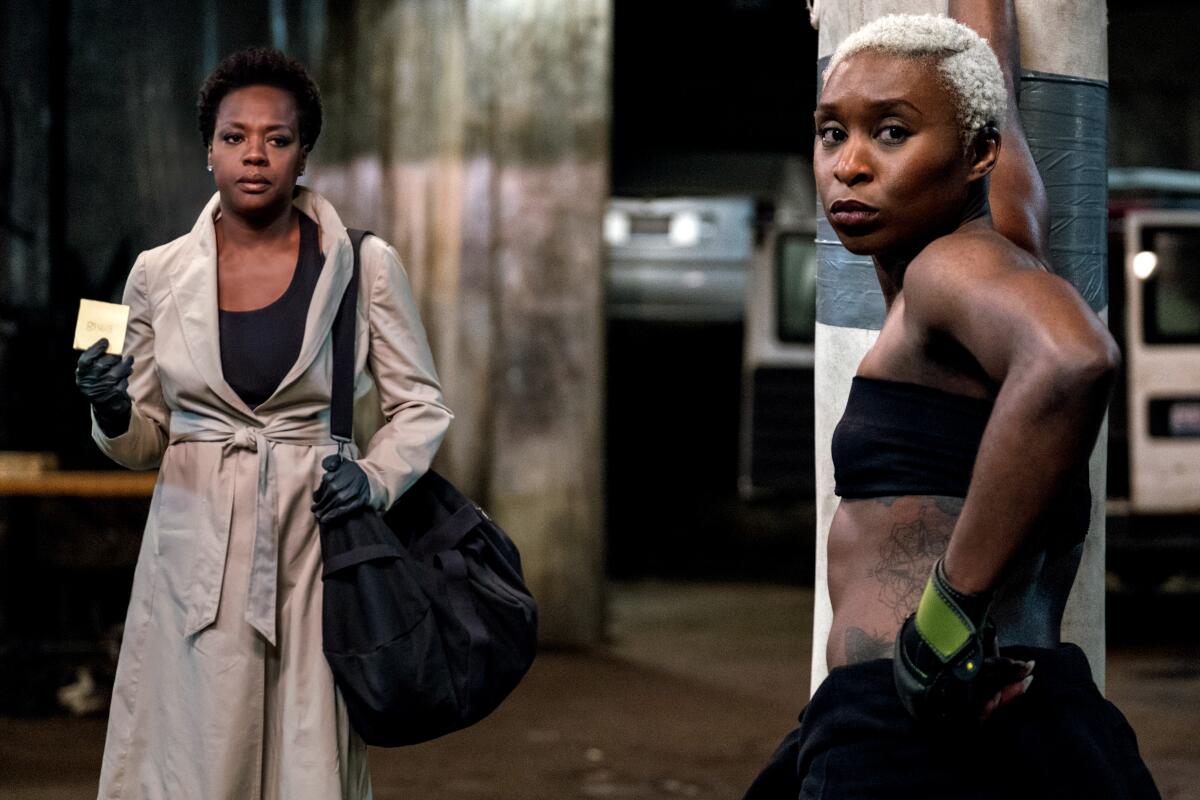
Viola Davis, left, and Cynthia Erivo in the movie “Widows.”
(Merrick Morton / Twentieth Century Fox)
The film is a stylish, moody crime thriller, but it is also deeply attuned to nuances of race, class and gender, making it exceptionally sharp. (Colin Farrell plays a corrupt local politician in a performance that has shades of his recent work on “The Penguin.”) But what really struck me watching “Widows” this time is how these women are consistently underestimated and counted out yet somehow find their way through, rising up to claim what they deserve. It turned out to be just the movie I needed.
In his original review of the film, Justin Chang wrote, “As taut and twisty as much of it is, ‘Widows’ never feels like escapism. Like a hard-boiled version of ‘Ocean’s 8,’ with faint echoes of ‘Set It Off’ and ‘Diabolique,’ it turns a contrived B-movie template into a smart and sinewy piece of social realism.”
“Widows” is currently available on various digital platforms, including Prime Video.
Daniel Craig retrospective
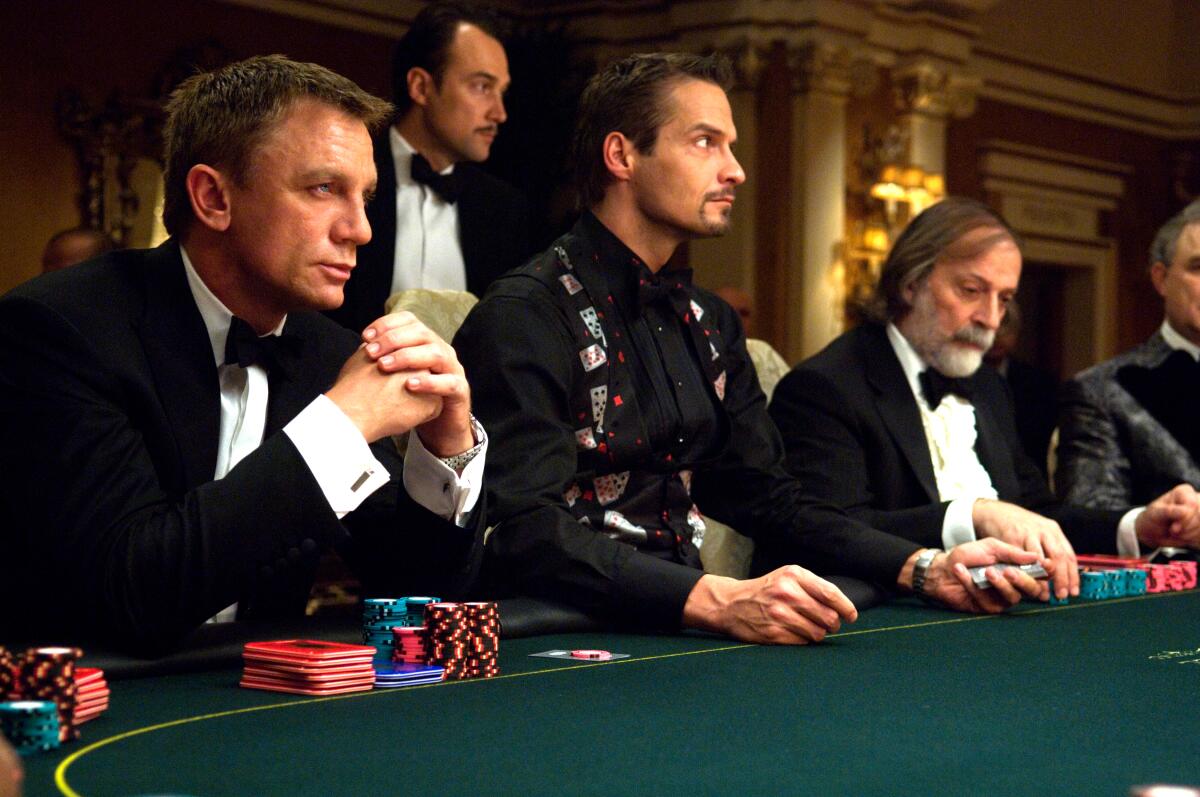
Daniel Craig, left, as James Bond in “Casino Royale.”
(Jay Maidment / United Artists)
The American Cinematheque is launching a retrospective series on actor Daniel Craig starting Thursday with an advance screening of his upcoming “Queer,” directed by Luca Guadagnino, along with John Maybury’s 1998 “Love Is the Devil.” Craig is scheduled to be present for a Q&A. “Queer” is an adaptation of William S. Burroughs’ novel based on his time living in Mexico City, with Craig playing the role of expatriate writer William Lee, while “Love Is the Devil” stars Derek Jacobi as painter Francis Bacon, with Craig as his lover.
Craig also is scheduled to appear on Saturday, Nov. 16 at the Egyptian Theater for a career conversation ahead of a screening of David Fincher’s 2011 “The Girl With the Dragon Tattoo.”
Though Craig will always be best known for his work as James Bond and the way he helped reshape that franchise, he is much more than just an action star — a performer of great range, capable of character-actor nuance and leading-man style.
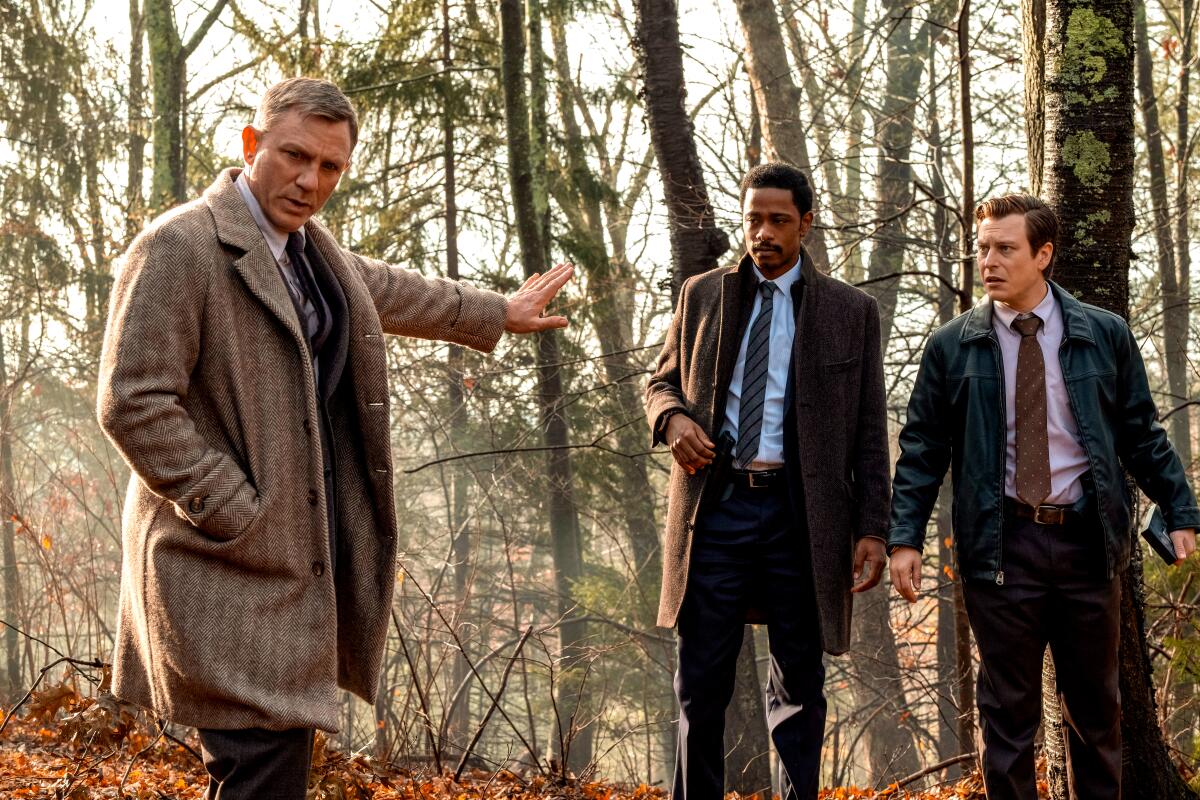
Daniel Craig, left, LaKeith Stanfield and Noah Segan in the movie “Knives Out.”
(Claire Folger / Lionsgate)
Other films in the series include Matthew Vaughn’s 2004 crime thriller “Layer Cake,” Roger Michell’s 2003 drama “The Mother,” Craig’s first outing as Bond in Martin Campbell’s 2006 “Casino Royale” and the first of the mystery series in which he plays detective Benoit Blanc, Rian Johnson’s 2019 “Knives Out.”
When I interviewed Craig in 2022 around the release of the second Benoit Blanc film, “Glass Onion” — a third one, “Wake Up Dead Man,” is due in 2025 — he was reluctant to attempt to find a shape or throughline to his work. As he said, “You’re making the mistake that I somehow have a plan. I don’t give it that much thought. … I don’t have a game plan. The things that happen in my life professionally, the decisions I make about them, are gut, mainly.”
‘Making Mr. Right’
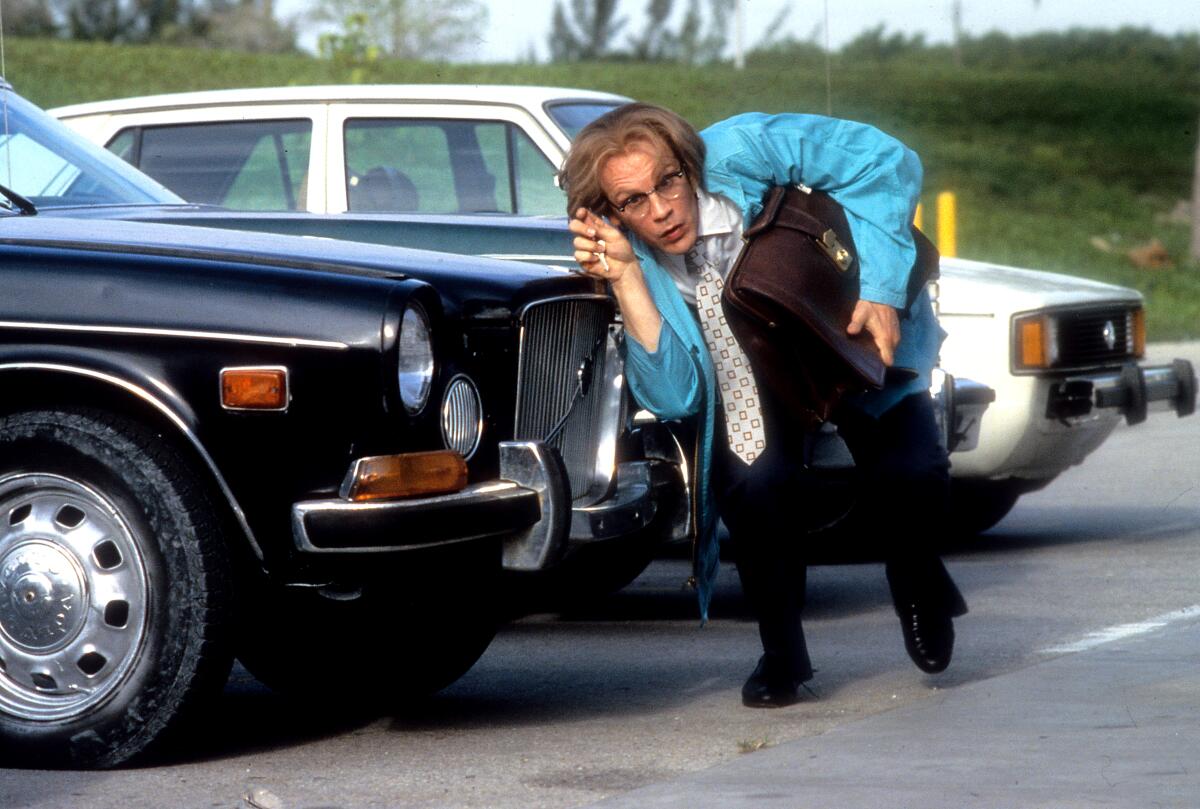
John Malkovich in the 1987 movie “Making Mr. Right.”
(Orion Pictures via Getty Images)
Tonight Vidiots will have a 35mm screening of Susan Seidelman’s 1987 “Making Mr. Right,” her follow-up to 1985’s “Desperately Seeking Susan.” Both Seidelman and star Ann Magnuson will be there for a Q&A. The film is about a heartbroken image consultant (Magnuson) who is hired by a socially awkward scientist-entrepreneur (John Malkovich) to teach his android doppelganger (also Malkovich) how to behave in a manner more akin to humans. The goal is to make him more appealing to the general public before he’s launched on a seven-year mission to space.
The movie is incredibly endearing, thanks largely to the performances of Magnuson and Malkovich, who is magnificent in his dual roles, but also the overall eclectic thrift-shop aesthetic that is akin to Jonathan Demme’s 1986 “Something Wild.”
Earlier this week Magnuson posted a photo from the film’s premiere of herself with Seidelman and acclaimed artist Keith Haring, noting, “We invite you to join us to get out and to be with friends and yes, have some laughs.”
Points of interest
‘The Graduates’
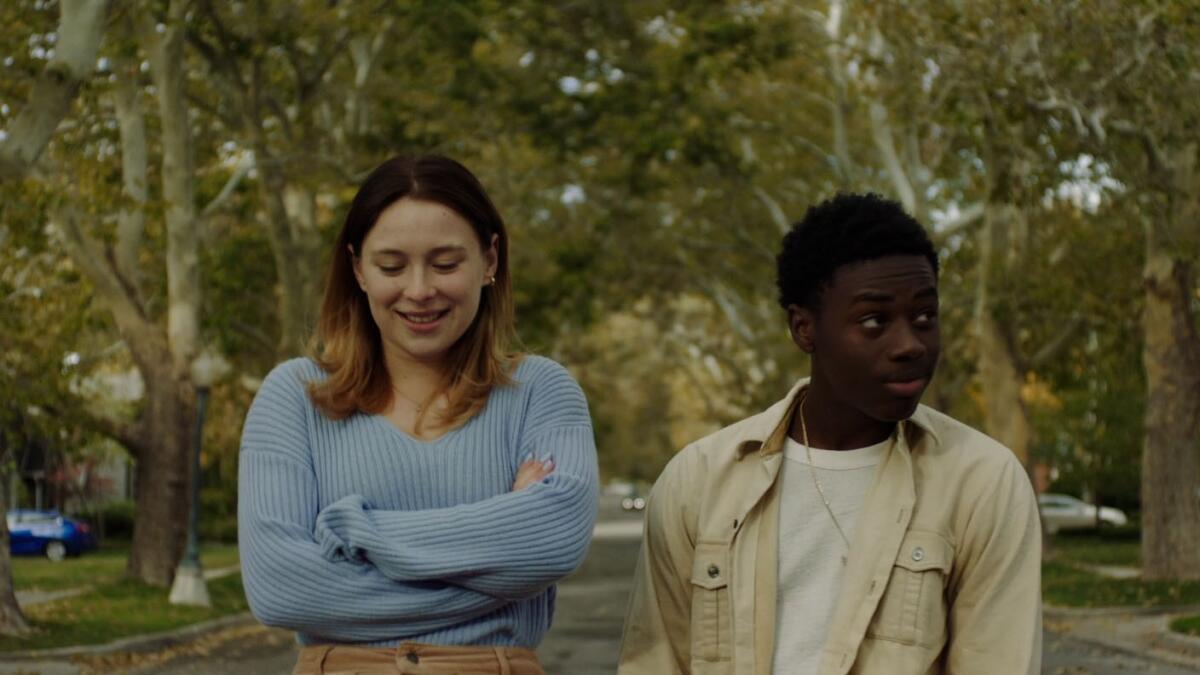
Mina Sundwall, left, and Alex Hibbert in the movie “The Graduates.”
(The Future of Film Is Female)
Having premiered at the Tribeca Film Festival in 2023, “The Graduates,” the feature debut of writer-director Hannah Peterson, includes Chloé Zhao and John Cho among its executive producers. The patiently gentle, emotionally exacting film tells the story of a community grappling with the aftermath of a school shooting and the difficulty of moving forward after a tragedy. In the lead role of Genevieve, who lost her boyfriend in the incident, Mina Sundwall brings a sense of freshness and depth. The cast also includes Alex Hibbert, Maria Dizzia and Cho.
It’s the first movie being distributed by the nonprofit group The Future of Film Is Female. The film will play at Vidiots on Monday, with a Q&A with Peterson moderated by “Anora” director Sean Baker. Then on Nov. 15, there will be a screening at the American Cinematheque at the Los Feliz 3 with a Q&A with Peterson, cinematographer Carolina Costa and actors Cho, Sundwall and Yasmeen Fletcher, moderated by Nora Bernard.
‘Candy Mountain’
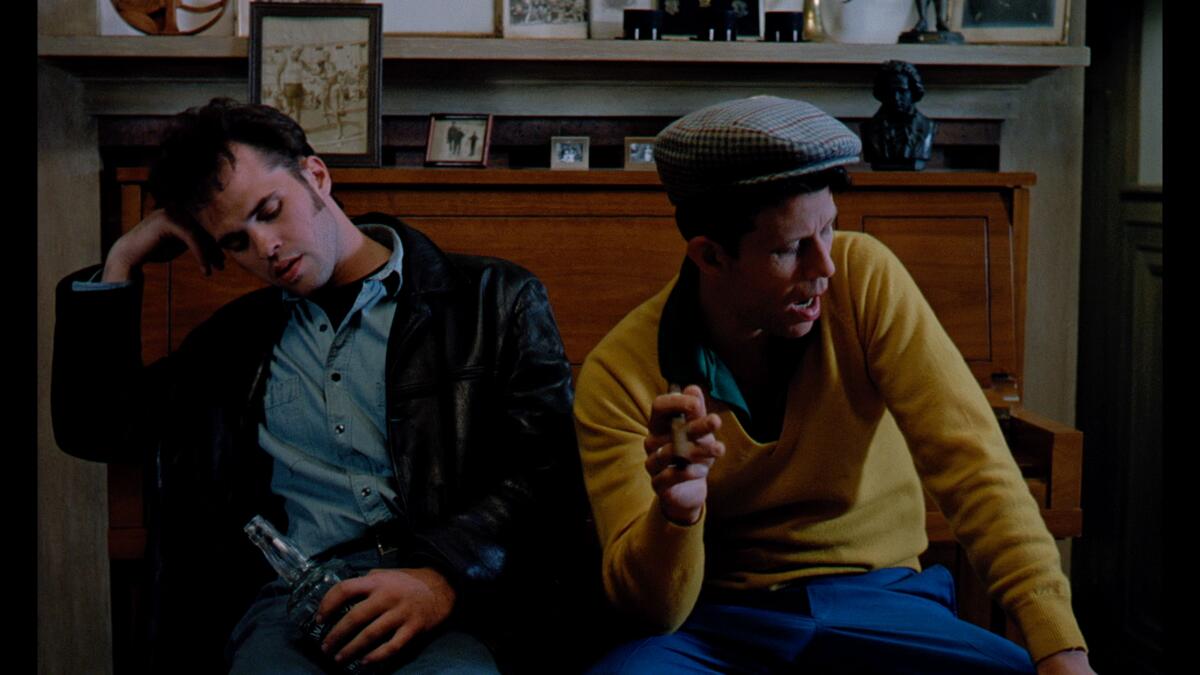
Kevin J. O’Connor, left, and Tom Waits in the movie “Candy Mountain.”
(Film Movement)
On Wednesday, Mezzanine will host the West Coast premiere of a new restoration of 1987’s “Candy Mountain,” directed by Robert Frank and Rudy Wurlizter. A laconic road movie starring Kevin J. O’Connor as a struggling musician hired to find a legendary guitar maker (Harris Yulin), the film features appearances by Tom Waits, Joe Strummer, Leon Redbone, Dr. John and David Johansen.
Frank is perhaps most famous for his 1959 photo essay “The Americans,” but he also had a fascinating career as a filmmaker, including 1959’s Beat Generation-inspired “Pull My Daisy” and 1972’s Rolling Stones tour film “C—sucker Blues.” Wurlitzer also worked on the screenplays to Monte Hellman’s “Two-Lane Blacktop,” Sam Peckinpah’s “Pat Garrett and Billy the Kid,” Alex Cox’s “Walker” and Bernardo Bertolucci’s “Little Buddha.”
In his 1987 Times review of the film, Michael Wilmington called it “a comedy with blood on its mouth; a romance with a knife in its heart. It’s also an action movie about running nowhere, and a musical about the music no one hears. Writer-director Rudy Wurlitzer and co-director Robert Frank take these paradoxes and play with them gently, soberly, turning them into fierce poetry. … It’s almost a little masterpiece: morally brave, beautifully measured, funny, sad and powerful. With quiet skill, it tears open and subverts some glittery fantasies of the American dream.”
Early Nicole Holofcener double bill
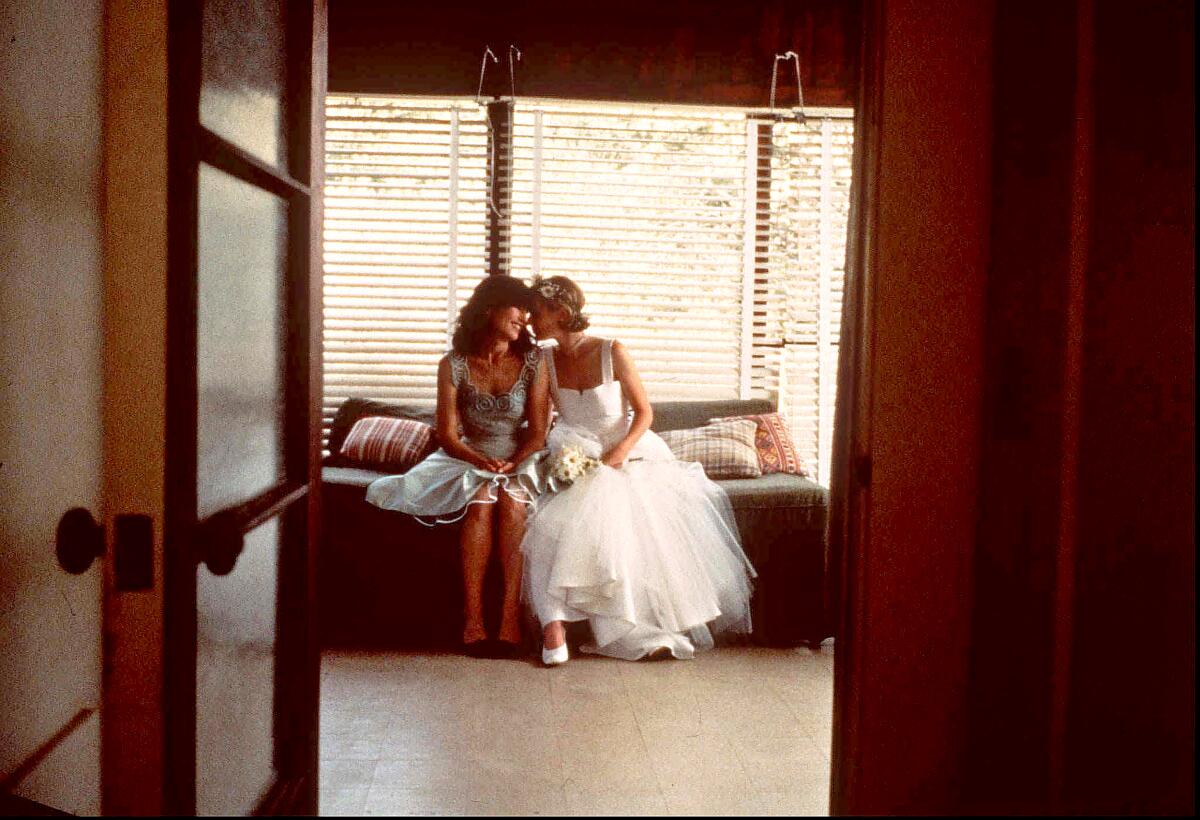
Catherine Keener, left, and Anne Heche in the movie “Walking and Talking.”
(Miramax)
Next Wednesday and Thursday, the New Beverly will have a double bill of Nicole Holofcener’s 1996 debut feature, “Walking and Talking,” along with her 2001 follow-up, “Lovely & Amazing.” Taken together they show what an astute chronicler of personalities, relationships and the minutiae of everyday life Holofcener has been right from the start of her career.
“Walking and Talking” stars Catherine Keener and Anne Heche as female friends trying to sort out their relationship after one of them gets engaged to be married. (Liev Schreiber, Todd Field and Kevin Corrigan all appear as well.) “Lovely & Amazing” stars Keener, Brenda Blethyn, Emily Mortimer and Raven Goodwin as a family of women each trying to establish and understand her own identity.
Reviewing “Walking and Talking,” Kevin Thomas wrote that the film “deftly reveals those moments of unintended hurt and unexpected vulnerability that seem an inevitable component of our closest relationships. … To her credit, Holofcener resists trying to make Amelia and Laura adorable. They’re both edgy, blunt women, often tactless; attractive but not beauties. Their vulnerability and forthrightness, their struggles to straighten out their lives and their capacity to cause and experience pain in the process, make them seem very real. It’s a downright refreshing experience to be presented with people you can identity with, recognize yourself in them, without being asked to like them.”
In his original review of “Lovely & Amazing,” Kenneth Turan wrote that the film “is all but indescribable, and what a good thing that is. Like the best of personal, independent cinema — terms that too often provide cover for a multitude of sins — it is both marvelously observed and completely individual. There is no film like this film, and that is something you don’t hear every day. … ‘Lovely & Amazing’ involves us because it is so incisive, so bleakly amusing about how we go about our lives. Many of these characters are people we almost hate to love, but by illuminating their humanity, this film doesn’t give us a choice.”
